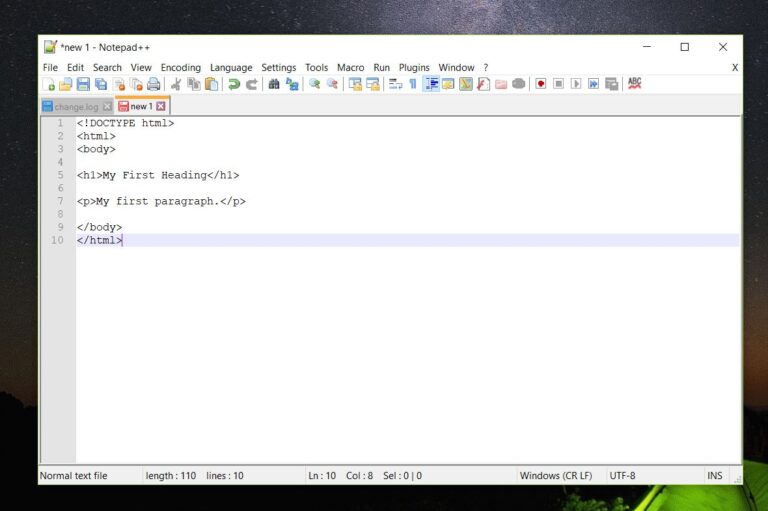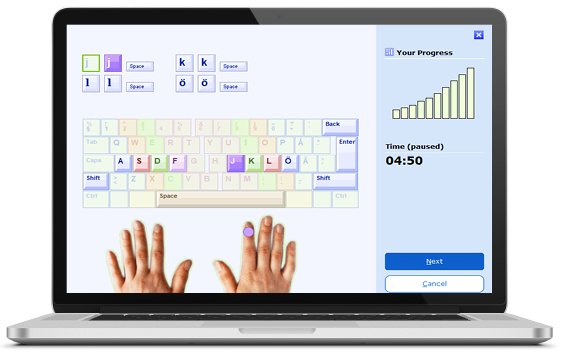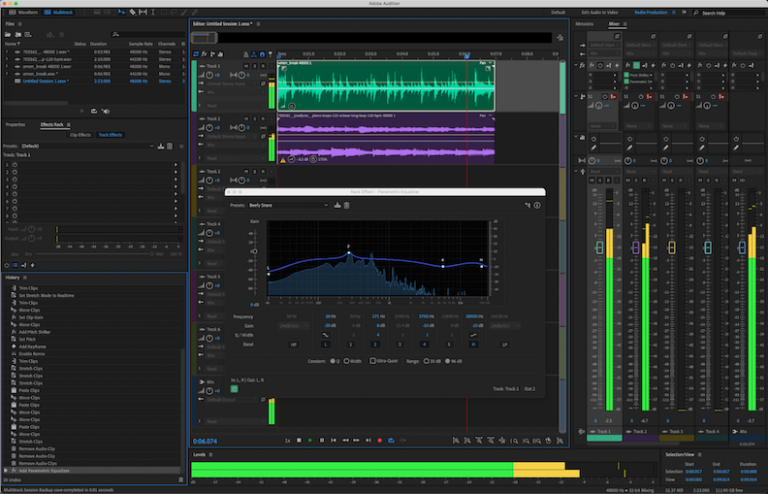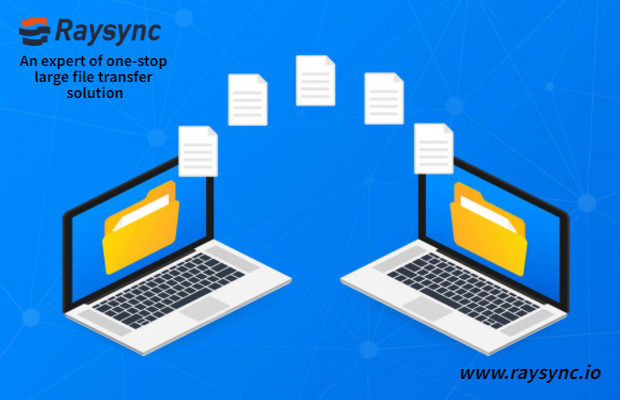The best weather software for PC is WeatherBug. It offers accurate forecasts, real-time alerts, and a user-friendly interface.
WeatherBug stands out for its comprehensive weather data and easy navigation. Users can access current conditions, hourly forecasts, and 10-day outlooks. The software provides severe weather alerts, ensuring timely notifications for safety. Interactive maps and radar features enhance the user experience.
WeatherBug also includes features like lightning alerts and pollen levels, catering to various needs. Its sleek design and customizable options make it a favorite among users. Ideal for both casual weather checks and detailed analysis, WeatherBug offers reliability and convenience. It’s compatible with various Windows versions, ensuring broad accessibility for PC users.
Introduction To Weather Software
Weather software helps you understand the weather. It shows forecasts and warnings. This software runs on your PC. Many people use it to plan their day. It helps you know if it will rain or snow. Weather software is very useful.
The Importance Of Accurate Weather Predictions
Accurate weather predictions are very important. Farmers need them to grow crops. Pilots need them to fly safely. Fishermen need them to catch fish. Accurate predictions save lives. They help people avoid bad weather. They make daily life easier.
How Technology Enhances Weather Forecasting
Technology makes weather forecasting better. Computers analyze weather data. Satellites send pictures of the earth. Radar shows where it is raining. Weather software uses this data. It creates accurate forecasts. You can see these forecasts on your PC.
| Feature | Description |
|---|---|
| Real-time Updates | Get the latest weather information instantly. |
| Interactive Maps | View weather changes on detailed maps. |
| Alerts and Warnings | Receive notifications for severe weather. |
| Customizable Settings | Adjust the software to meet your needs. |
Key Features Of Top Weather Software
When searching for the best weather software for your PC, understanding the key features is essential. Top weather software provides accurate forecasts, real-time updates, and detailed meteorological data. Below, we explore the most important features of top weather software.
Real-time Updates And Alerts
Real-time updates keep you informed about current weather conditions. Instant alerts notify you of severe weather events, ensuring safety. These features help you plan your day effectively. Reliable software offers frequent updates for the most accurate information.
Detailed Meteorological Data Analysis
Top weather software provides detailed meteorological data analysis. This includes temperature, humidity, wind speed, and precipitation levels. Detailed charts and graphs make data easy to understand. Advanced software may also offer historical weather data.
| Feature | Description |
|---|---|
| Temperature | Current, high, and low temperatures |
| Humidity | Percentage of moisture in the air |
| Wind Speed | Current wind speed and direction |
| Precipitation Levels | Rainfall or snowfall measurements |
| Historical Data | Past weather trends and data |
Using these features, you can make informed decisions based on weather predictions. This is especially useful for planning outdoor activities. The best weather software ensures you have all the data you need.
Comparative Analysis Of Popular Weather Applications
Weather software helps users track weather conditions easily. But, different apps offer different features. Here, we compare some popular weather applications for PC.
Desktop Vs. Mobile Solutions
Both desktop and mobile weather apps have their benefits. Let’s explore the differences:
| Feature | Desktop | Mobile |
|---|---|---|
| Display | Larger screen, detailed info | Smaller screen, quick access |
| Accessibility | Requires PC | Portable, always with you |
| Notifications | Limited notifications | Push notifications, alerts |
Free Vs. Paid Versions
Weather apps come in both free and paid versions. Here are some differences:
- Free Versions: Basic features, ads, limited support
- Paid Versions: Premium features, no ads, priority support
Here is a quick comparison of popular weather apps:
- WeatherBug
- Free version: Basic forecasts, ads
- Paid version: Advanced alerts, ad-free
- The Weather Channel
- Free version: Daily forecasts, limited radar
- Paid version: Detailed radar, extended forecasts
- AccuWeather
- Free version: Basic forecasts, ads
- Paid version: Minute-by-minute updates, no ads
User Experience And Interface Design
Choosing the best weather software for your PC involves many factors. One of the most crucial aspects is the user experience and interface design. A well-designed interface makes the software enjoyable and easy to use. Let’s delve into the key components that define an excellent user experience.
Ease Of Use And Navigation
The best weather software should be intuitive. Users should find it easy to navigate through various features. Look for software that offers a clean and simple layout. Buttons and menus should be clearly labeled. This helps users locate the information they need quickly.
- Clear and simple layout
- Easily labeled buttons and menus
- Quick access to vital information
Customization And Personalization Options
Good weather software allows users to customize their experience. This includes setting preferred weather metrics and alerts. Users should be able to choose between Celsius and Fahrenheit. The software should also offer personalized alerts for severe weather conditions. Customization enhances user satisfaction.
| Feature | Customization |
|---|---|
| Temperature Units | Celsius, Fahrenheit |
| Weather Alerts | Severe weather notifications |
| Display Options | Light and Dark modes |
With these customization options, users get a tailored weather experience. The best software adapts to user preferences.
Accuracy And Sources Of Weather Data
Choosing the best weather software for your PC depends greatly on the accuracy of the data it provides. Accurate weather data can help plan activities, avoid bad weather, and stay safe. The sources of this data play a crucial role in determining its reliability. In this section, we will explore the role of local weather stations and the integration with global weather services.
Role Of Local Weather Stations
Local weather stations are essential for providing precise weather data. They gather information directly from your area, ensuring the data is relevant to you. These stations measure various parameters, such as temperature, humidity, wind speed, and rainfall.
- Temperature: Measures the heat level in the atmosphere.
- Humidity: Indicates the moisture content in the air.
- Wind Speed: Determines the speed of the wind.
- Rainfall: Measures the amount of precipitation.
Local weather stations often update their data frequently. This ensures you get the most current weather information. They also help in detecting sudden changes in weather, which is crucial for timely warnings.
Integration With Global Weather Services
While local stations provide detailed data, global weather services offer a broader view. They collect data from multiple sources worldwide. This includes satellites, buoys, and aircraft reports. By integrating these sources, weather software can predict large-scale weather patterns.
Global weather services use advanced algorithms and models. These help in forecasting weather for extended periods. They also assist in tracking severe weather events like hurricanes and storms.
| Source | Data Provided |
|---|---|
| Satellites | Images of cloud cover and storm systems |
| Buoys | Sea temperature and wave height |
| Aircraft | Atmospheric pressure and wind speed |
By combining local and global data, weather software can offer highly accurate forecasts. This integration ensures you are prepared for both local and global weather events.
Additional Tools And Widgets
The best weather software for PC offers more than just basic forecasts. Additional tools and widgets enhance the user experience, providing essential information at your fingertips. These tools keep you prepared for any weather situation.
Radar And Satellite Imagery
Advanced weather software includes radar and satellite imagery. This feature helps you track weather systems in real-time. You can see storm movements and cloud coverage with high accuracy.
Radar imagery displays precipitation levels. Satellite imagery shows cloud formations and weather patterns. Both tools are crucial for weather enthusiasts and professionals.
| Feature | Benefit |
|---|---|
| Radar Imagery | Tracks precipitation and storm movements |
| Satellite Imagery | Monitors cloud coverage and weather patterns |
Weather Warnings And Emergency Features
Weather warnings and emergency features are vital in weather software. They alert users about severe weather conditions. This includes tornadoes, hurricanes, and thunderstorms.
These features provide real-time notifications. Users get timely alerts to stay safe and take necessary actions. Emergency features may include evacuation routes and shelter locations.
- Real-time weather alerts
- Emergency notifications
- Evacuation routes
- Shelter locations
Timely alerts can save lives during severe weather events. Make sure your weather software includes these essential features.
Impact Of Weather Software On Various Industries
The impact of weather software on various industries is profound. Accurate weather forecasts are crucial for many sectors. They help in planning and decision-making. This blog explores how different industries benefit from weather software.
Agriculture And Farming
Weather software is vital for agriculture and farming. Farmers rely on accurate weather data to protect their crops. They use weather forecasts to plan planting and harvesting. This ensures better crop yields and reduces losses.
Weather software also helps in irrigation management. Farmers can schedule watering based on rainfall predictions. This saves water and ensures healthy crops. Extreme weather alerts help farmers take timely action. They can protect crops from frost, heatwaves, or storms.
The table below highlights key benefits of weather software for agriculture:
| Benefit | Explanation |
|---|---|
| Crop Planning | Helps in deciding the best time for planting and harvesting. |
| Irrigation Management | Optimizes water usage based on rainfall predictions. |
| Extreme Weather Alerts | Enables timely action to protect crops from adverse weather. |
Event Planning And Management
Weather software is crucial for event planning and management. Planners use it to choose the best date for events. Accurate weather forecasts ensure outdoor events are not disrupted.
Weather software helps in risk management. Planners can prepare for weather-related contingencies. This includes arranging for tents, heaters, or cooling systems. Real-time weather updates keep planners informed. They can make quick decisions to ensure the safety of guests.
Below are some key advantages of weather software for event planning:
- Event Scheduling: Ensures events are planned on days with favorable weather.
- Risk Management: Helps in preparing for weather-related emergencies.
- Guest Safety: Allows quick decisions to ensure the safety of attendees.
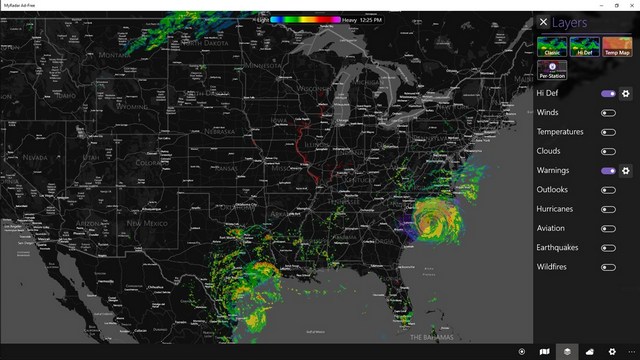
Credit: beebom.com
Future Trends In Weather Forecasting Technology
Weather forecasting technology is advancing rapidly. It helps us understand weather patterns better. Let’s explore future trends in weather forecasting technology.
Artificial Intelligence And Machine Learning
Artificial Intelligence (AI) and Machine Learning (ML) are transforming weather predictions. These technologies analyze vast amounts of data quickly. They improve the accuracy of forecasts.
AI can detect patterns in weather data. It learns from past events. This helps predict future weather more accurately. Machine learning models can process data from various sources. They include satellite images, radar data, and historical weather records.
With AI and ML, weather software can provide real-time updates. It can warn of sudden changes in weather. This technology helps in disaster management. It saves lives and property.
Community-based Reporting And Crowdsourcing
Community-based reporting involves people sharing local weather information. Crowdsourcing uses this data to improve forecasts. This trend is growing rapidly.
Weather apps now allow users to report conditions. They can share temperature, rainfall, and other details. This data is valuable. It provides hyper-local information.
Platforms like Waze use crowdsourced data. It helps improve traffic and weather predictions. These reports are integrated with traditional weather data. This enhances accuracy.
Community-based reporting creates a collaborative environment. People feel involved in weather forecasting. It empowers communities. It builds resilience against weather challenges.
| Technology | Benefits |
|---|---|
| Artificial Intelligence | Improves forecast accuracy, processes vast data quickly |
| Machine Learning | Detects patterns, learns from past events |
| Crowdsourcing | Provides hyper-local information, enhances accuracy |
Choosing The Right Weather Software For Your Needs
Finding the best weather software can be challenging. Your needs and preferences play a big role. This section will guide you in making the right choice.
Assessing Your Requirements
Begin by understanding what you need from weather software. Do you require real-time updates or historical data? Are you interested in tracking severe weather conditions or casual daily forecasts?
Make a list of features you want. These may include:
- Real-time updates
- Historical data
- Severe weather alerts
- Global weather tracking
- Customizable interface
Knowing your requirements helps in narrowing down your options.
Comparing User Reviews And Ratings
User reviews and ratings provide valuable insights. They highlight the strengths and weaknesses of each software. Look for software with high ratings and positive feedback.
Avoid software with repeated negative comments. Here is a simple table to compare user ratings:
| Software | Average Rating | Key Features |
|---|---|---|
| WeatherApp A | 4.5 | Real-time updates, Severe weather alerts |
| WeatherApp B | 4.2 | Historical data, Customizable interface |
| WeatherApp C | 4.0 | Global weather tracking, Daily forecasts |
High ratings often indicate reliable and user-friendly software. Reviews offer practical insights into real-world use cases.

Credit: www.youtube.com
Installation And Setup
Setting up the best weather software for your PC is simple. Follow our guide to install and troubleshoot the software. Ensure accurate weather updates with these easy steps.
Step-by-step Installation Guide
- Download the Software: Visit the official website to download the installer.
- Run the Installer: Double-click the downloaded file to start the installation.
- Agree to Terms: Read and accept the software’s terms and conditions.
- Select Installation Folder: Choose where to install the software on your PC.
- Complete Installation: Click ‘Install’ and wait for the process to finish.
- Launch the Software: Open the program from the start menu or desktop shortcut.
Troubleshooting Common Issues
| Issue | Solution |
|---|---|
| Installation Fails | Ensure you have enough disk space. Try again after clearing space. |
| Software Crashes | Update your graphics drivers. Restart your PC after updating. |
| No Internet Connection | Check your network settings. Restart your router and try again. |
| Weather Data Not Updating | Ensure your PC’s date and time are correct. Adjust settings as needed. |
Integrating Weather Software With Other Applications
Integrating weather software with other applications can greatly enhance productivity. Seamlessly connecting your weather software with different tools allows you to stay informed and make better decisions. Let’s explore two key integrations: connecting with calendars and scheduling tools, and smart home automation with IoT.
Connecting With Calendars And Scheduling Tools
Integrate weather software with calendars to plan your days better. Syncing weather forecasts with your calendar helps avoid bad weather days for important events.
- Google Calendar: Add weather forecasts to your Google Calendar. This helps you see the weather along with your events.
- Outlook Calendar: Outlook offers weather integration, showing forecasts next to your appointments.
Use scheduling tools like Trello and Asana to get weather updates. This helps plan outdoor tasks more efficiently.
Smart Home Automation And Iot
Weather software can also integrate with smart home devices. Control your home based on weather conditions. Connect your weather software to smart thermostats to adjust your home’s temperature automatically.
- Smart Lights: Adjust lighting based on the weather. Dim lights on cloudy days.
- Smart Irrigation Systems: Automatically water your garden based on rain forecasts.
Integrate weather software with voice assistants like Amazon Alexa and Google Home. Get weather updates and control devices using voice commands.
| Device | Integration Benefit |
|---|---|
| Smart Thermostat | Automatic temperature adjustment based on weather |
| Smart Lights | Adjust lighting according to weather conditions |
| Smart Irrigation | Water garden based on rain forecasts |
Conclusion: Harnessing The Power Of Weather Forecasting
Weather software for PC has revolutionized the way we stay informed. These tools provide accurate forecasts, helping us plan our days better. Let’s explore the benefits and future of digital weather solutions.
Summarizing Key Takeaways
Weather software offers numerous advantages. Here are the main points:
- Accuracy: Reliable predictions for various weather conditions.
- Convenience: Easy access to forecasts on your PC.
- Advanced Features: Radar maps, alerts, and detailed reports.
- User-Friendly: Simple interfaces suitable for all ages.
The Future Of Digital Weather Solutions
The future of weather software looks promising. Developers continue to improve these tools. Here are some expected advancements:
- AI Integration: Smarter predictions using artificial intelligence.
- Enhanced Graphics: More detailed and interactive weather maps.
- Custom Alerts: Personalized notifications based on user preferences.
- Global Coverage: Access to weather data from around the world.
These advancements will make weather forecasting more accurate and user-friendly. Stay updated with the latest weather software to make the most of these innovations.
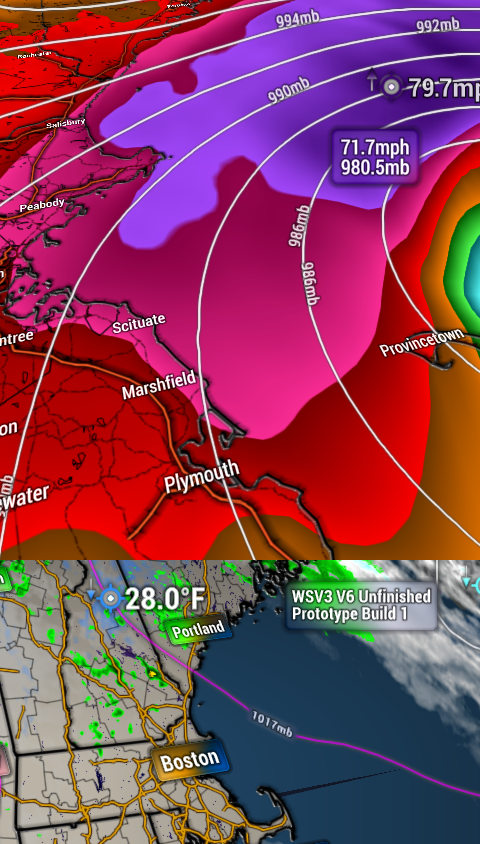
Credit: wsv3.com
Frequently Asked Questions
What Is The Best Weather App For My Computer?
The best weather app for your computer is Weather. com. It offers accurate forecasts, radar maps, and alerts. Another excellent option is WeatherBug, known for its detailed weather data and user-friendly interface. Both apps provide reliable weather updates and are highly recommended.
What Software Do Meteorologists Use?
Meteorologists use software like WRF, GFS, and ECMWF for weather forecasting. They also use tools like GRIB and BUFR for data analysis.
What Is The Most Highly Rated Weather App?
The most highly rated weather app is Dark Sky. It offers accurate forecasts and a user-friendly interface.
What Is The Real Time Weather Software?
Real-time weather software provides up-to-date weather data, forecasts, and alerts. It helps users make informed decisions quickly.
Conclusion
Choosing the right weather software for your PC can enhance your planning and safety. These options offer accurate forecasts and user-friendly interfaces. Stay updated with real-time data and customizable alerts. Investing in the best weather software ensures you’re always prepared for any weather condition.
Make your choice today and stay informed.

